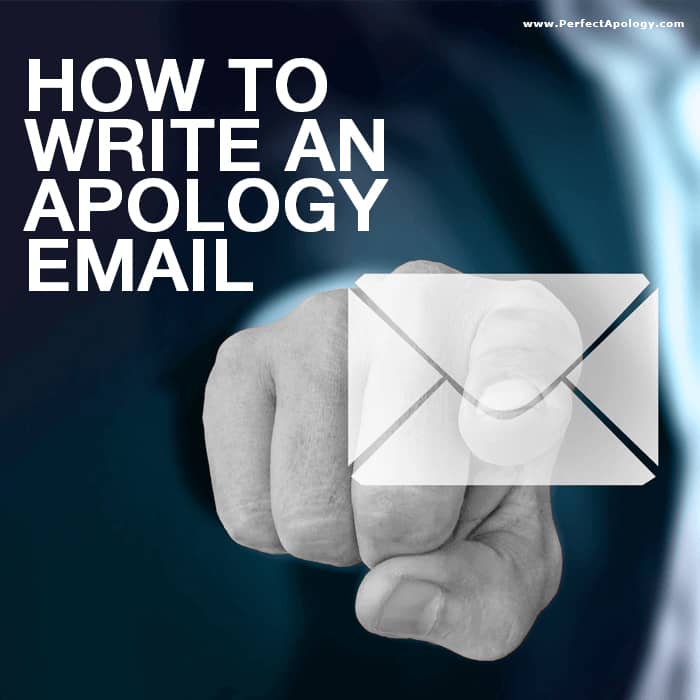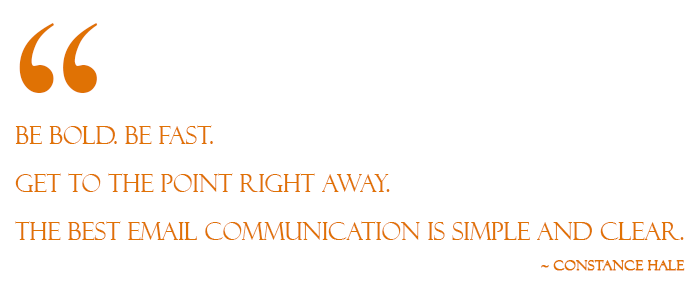How to Write the Perfect Apology Email (Dos & Don'ts)
How to write an apology email is a question that we increasingly hear in the mea culpa world.
In a digital age dominated by emails, expressing genuine regret and seeking forgiveness has become an art form. Apology emails, while convenient, often lack the emotional weight of a handwritten letter. However, with the right approach, you can elevate your apology email to resonate as deeply as a physical apology.

The 3 Crucial Components of an Apology Email
→ THE SUBJECT LINE: Your Apology's First Impression
The subject line is your make-or-break moment. Make it short and be clear about what your email contains.
Research tells us that a concise, clear subject line significantly impacts the recipient's decision to open your email. Avoid misleading promises, emojis, and superfluous language in the subject line. They can dilute the sincerity of an email apology. Simple is better here.
For Personal Relationships: [ Friends & Family ]
I owe you an apology.
I made a mistake, I'm sorry.
I need to apologize to you.
I'm sorry. I messed up.
Please accept this apology.
For Professional Relationships: [Customer, Client, Boss, Professor...]
In professional situations, whenever possible, always include the infraction/error/mistake in your apology email subject line.
We owe you an apology for...
We made a mistake. We're sorry for...
We apologize for...
Please accept our deepest apologies for...
We messed up. Here's what happened & how we will make it up to you.
→ THE CONTENT: Crafting a Heartfelt Email Apology
In the body of your email, apologize sincerely, providing a detailed account of the situation. Take responsibility, acknowledge the harm caused, and express genuine regret.
→ FORMAT & STYLE: Navigating the Email Apology Landscape
While email limits formatting options, small style signals matter. Begin with a formal greeting, address the recipient appropriately, and conclude with a respectful closing. Remember, every detail contributes to how your apology is received.
How To Write an Apology Email: Content Template
Here are the primary concepts and bulk content for an apology email. It doesn't matter who your apology is directed to, these same elements should always be included.
1. Apologize and provide a detailed account of things. It's important that the recipient of your email understands that you are completely aware of what happened, and where you (or the situation) went wrong.
It's easy to do both in the opening of your email. For example
Dear______________,
Please accept my sincere apologies. I'm sorry. I should have never [... explain the infraction in detail...] and would like to apologize.
2. Take full responsibility and acknowledge the hurt or damage done. The recipient needs to know that you can place yourself in their shoes and see things from their point of view.
This becomes the main body of your email.
I know I hurt you and placed you in an awkward situation. I (un)intentionally [...embarrassed / offended / betrayed etc...] you and made everyone uncomfortable. More importantly I hurt you.
I'm sorry, it was never my intention.
The truth is I was [... wrong, angry, jealous, being vindictive etc...] and I directed that anger at you. There is no excuse for my behavior and I really am sorry.
3. Express your regret and ask for forgiveness. They need to feel your regret and remorse through the email. And, by asking for forgiveness you give them back the power to determine the future of your relationship—it's important to give them that control.
I regret how I [ acted / lied / cheated / missed interview / missed meeting etc...], and am remorseful for the things I said. I feel [ sad / terrible / ashamed / embarassed etc... ] about the way things turned out and that I released my [...anger, frustration, negativity etc...] on you. It had nothing to do with you. Please forgive me.
4. In the closing of the email, promise that it will never happen again. Without promising AND changing your behavior there's no point in emailing the apology.
Finally, offer some form of restitution if it makes sense and ask if there's anything else you can do to make things right again.
I put our relationship at risk and you are too important to me to ever have this happen again. I promise it won't. If there is anything else I can do to make it up to you, please let me know.
I hope you know that this apology comes from my heart and I will wait patiently for the day you are ready to forgive me.
With deep regret,
SUMMARY: HOW TO WRITE AN APOLOGY EMAIL
→ Be clear and concise. Let the recipient know from the Subject Line that your email is an apology.
→ Open the email content with the apology, saying you're sorry while describing what happened.
→ Throughout the email body let them know that you understand the hurt you caused and how much you regret it.
→ Ask for forgiveness. Promise it won't happen again and describe how you plan on fixing the situation. Convey how important the relationship is to you and ask if there is anything else you can do to make it up to them.
How to Start an Apology Email
The hardest part of writing an apology email is getting started. To overcome the initial hurdle start by typing out a powerful and sincere opening to set the tone for your apology. Here are a few to get you started...
I'm so sorry for acting out. I don't know how to express my sincere apologies for the pain caused and the tears shed because of me.
To my love... Please accept this heartfelt apology. If I could turn back time and take back everything I said, I would.
I just can't convey how truly sorry I am and how much I regret my actions. I don't know how I could have done what I did. It was idiotic and I let my frustration and anger get the best of me.
I'm so very sorry, please accept my apology. I know you probably hate me right now and I don't blame you. I haven't forgiven myself and I'm not sure I ever will.
I've been really stressed about emailing you. I know you don't want to have any contact with me and I very much want to respect your wishes. But, for the sake of our past relationship please just let me apologize. You don't need to respond or even acknowledge receipt of this email.
If you need more detailed information on what to include when writing an apology email, read our article on how to say sorry.
How to End an Apology Email
After your apology, convey your commitment to making amends and being open to reconciliation. Let them know how much you care about the relationship, that you're trying to fix things, and are open to listening and hearing what they have to say.
Please know that I racked my brain and have done everything I can think of to make sure this never happens again and correct my mistakes. I deeply regret it happened at all. You're so very important to me. If there is anything I can do to regain your friendship and trust, please let me know. I am truly sorry and humbly ask for your forgiveness...
I promise you that this will never happen again. It's important for me to regain your trust so that we can rely on each other in the future as we have in the past. If there is anything else that I can do, just let me know...
I'm so embarrassed by my words. I can't take back those hurtful words or pretend the whole situation never happened. It happened. It was completely my fault and as I said above, I take full responsibility. If there is anything I can do to make things right, please let me know.
I cherish our relationship more than you will ever know and am devastated at the thought of losing you. Losing you in this way has shaken me to my core and I promise you that I will never act or speak in that way ever again—you're too important to me...
Standard letter closings like 'Yours Truly' will work with apology emails. However, we like 'Sincerely' or 'Yours Sincerely' when it comes to apologies—it helps reinforce the message.
'Respectfully' and 'Yours Respectfully' are also good closings but better suited in professional apology emails.
Dos & Don'ts For Writing an Apology Email
✔ Do... Make sure your email is clear. Be honest. Let your sincerity shine through.
✔ Do... Show them that you know why they are angry and hurt.
✔ Do... Ask for forgiveness, however don't expect or demand it.
✔ Do... Tell them how much you enjoy having them in your life and why it's important for you to apologize—whether or not they accept it.
✔ Do... Make sure that your apology email describes in detail why and how much they were injured by your actions. Saying 'I know you were hurt' is too general and not the same as saying I know how offended and angry you were by my actions and/or words...'.
X Don't... Try to evoke sympathy as part of your apology.
X Don't... Share blame. Take full responsibility.
X Don't... Use qualifiers like 'if' or 'but' anywhere in your apology email.
I'm sorry if I hurt you and I apologize but I was in a bad mood that day sounds like you're making excuses or trying to justify things.

Apology Email FAQ [Frequently Asked Questions]
Our apology email FAQs are designed to help reduce the barriers we all face when we stare at our computer screens not sure how to get started.
One of the main obstacles is often a reluctance to admit that we're to blame for the situation—that it was our fault.
Seeing the words 'I was wrong. I'm sorry and I apologize', on our screens gives it a sense of permanence and causes us to feel vulnerable.
It's that feeling of vulnerability that prevents us from writing from the heart.
What are the benefits of writing an apology email?
An apology email gives you time to think about what to include in your apology and gives the recipient time to think about it before responding.
On the other hand, verbal apologies require you to think on your feet, be prepared for the recipient's reaction (negative or positive) and be ready for the conversation that follows.
How do I write an apology email?
Write your email from the heart. Be sincere and begin your email with the apology itself. Say you're sorry and describe what happened.
In the main body of the email communicate your regret based on the understanding of the hurt you caused. Ask for forgiveness, express your desire to fix the situation and explain why the relationship is important to you.
This article on apology emails gives detailed instructions, a template email, Dos & Don'ts, for apologizing in an email, and more...
Should I use 'I apologize' or 'I'm sorry' in my email?
'I apologize' and 'I'm sorry' are not directly interchangeable. Saying 'I'm sorry' expresses a level of regret or remorse. It tells the recipient that you've been affected emotionally by what happened, that you feel bad.
'I apologize' on the other hand is only a statement of admission. You're admitting that you were wrong but you are NOT necessarily sorry about it or feel bad about it.
For personal situations we recommend including both statements in your email.
How do you apologize professionally in an email?
There are a few things to take into account when looking at how to format a more professional appearing apology email. Format your email, as much as possible, like you would a formal apology letter.
Open the email with Dear___________, address the recipient as Mr. or Ms. Use more formal language throughout your email and never use contractions like I'm sorry instead of I am sorry or couldn't instead of could not. Close your email with Sincerely yours, or Respectfully yours,.
Learn more about apology letter formats.
When should I NOT send an apology by email?
You really need to consider the recipient, the relationship, and the infraction.
The elderly, for example, would likely not appreciate an apology email in the same way they would a proper letter. They don't view email the same way, so a handwritten or even typed apology is much more effective in showing them your sincerity—it's what they expect.
Remember that your apology always needs to meet the recipient's expectations and not yours.
With intimate relationships email is not the way to go. A handwritten apology on a card or in a letter is much more effective when love is involved.
The severity of the infraction, regardless of the recipient or relationsip, is also a key driver in determining whether an apology email is the way to go. For severe infractions and serious matters, a letter of apology on paper is always best. It adds formality and underscores how seriously you are taking things.
Finally, never choose to email your apology solely because it's easier.
What to avoid when writing an apology email?
Never use qualifiers in an apology email. Words like if and but always comes off like you're trying to justify things and that you aren't taking responsibility. I'm sorry but.... If only...
Don't try to evoke sympathy and don't link your apology to ANY other issues in your relationship. Finally, don't share the blame with others or demand a response.
How long should my apology email be?
As always, the length of your email and apology will be determined by the how badly you messed up. As long as the guidelines of what to include in a proper apology are met, the length of your apology will determine itself. It can be a single short paragraph or as long as a few pages.
How To Write An Apology Email That's sincere & effective
When we're asked about writing an apology email we always respond by telling people it's no different than delivering any other form of apology. Know what you need to say and how to say it—you'll have a better chance of the recipient accepting your apology.
Crafting a professional and effective apology email requires finesse and sincerity. The sincerity comes from honesty, specificity, and a detailed acknowledgment of the harm caused. Ensure your email apology includes all essential elements for maximum impact.
Remember, an apology is not just an email; it's a pathway to rebuilding trust and understanding.


